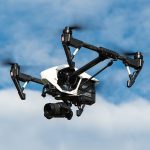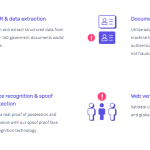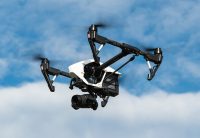Mobile Moves IPS Up The Shiny Object Tech Ladder
by Laurie Sullivan, Staff Writer @lauriesullivan, September 21, 2016
Location services continues to grow in popularity, and with it the deployment of indoor positioning systems (IPS). While research firm Markets and Markets estimate the sector to reach $4.4 billion by 2019, there are challenges.

In May 2016, IndoorAtlas, which supports IPS technology, commissioned independent market firm Vanson Bourne to conduct research to determine which sectors are most likely to deploy the technology, and why.
About 300 business and marketing decision makers responsible for the development and strategy of location-based applications were interviewed across the United States, United Kingdom, Asia and Australia.
Of the 231 respondents participating in the survey, 99% plan to adopt some form of IPS indoor-location technology. Those in retail said they will deploy the technology at the most number of venues, 83; followed by health services with 77; marketing and media with 58; and leisure, travel and transport, which includes airports, at 23.
Several drivers are pushing the technology. The most important drivers are centered on attracting new customers through proximity marketing and driving sales, both at 55%. Usability of venues follows at 48%, customer experience at 47%, brand awareness at 42%, and customer loyalty at 41%, according to the report.
Despite the interest in IPS technology, there are issues. For example, some 90% of respondents have concerns about purchasing, deploying and maintaining the technology, while 35% had concerns about beacons.
The Mumbai Airport created an application that allows travelers to pull out their mobile phone and launch an app after landing to tie in the arrival gate, ticket and connecting flight. It tells the person the gate number for the connecting flight and how long it will take to walk there from the arrival gate, according to Dan Patton, chief commercial officer at IndoorAtlas, which supports indoor positioning services.
The “points of interest” search feature within the Mumbai Airport app lets users search on different categories. It will serve a map with information on specific stores and provide directions on how to get there.
Of course, Patton, calls IPS technology the “next wave of advertising,” and seems to have countless examples of how it’s used, especially for companies in Asia. In fact, implementations lead in Asia, he says.
In another example, Yahoo Japan integrates IPS technology with Yahoo Maps, a free app. The company has been mapping shopping malls and train stations in Tokyo for the past nine months integrating search history, location and interests before serving an advertisement. In this instance, users must opt in.
Interestingly, the data collected from mobile devices provides insights to retailers, airports or other enclosed areas on traffic flow. That data could be used to further target consumers if retailers track the specific ID of the mobile device, as long as the consumer opts in to the program.
Patton says IndoorAtlas doesn’t offer that service today, but it’s technologically possible.
MediaPost.com: Search Marketing Daily
(19)













